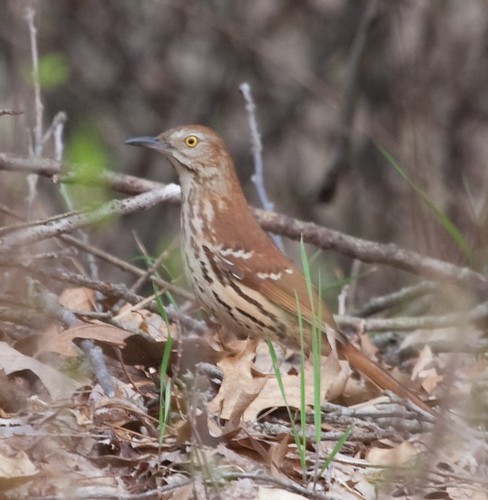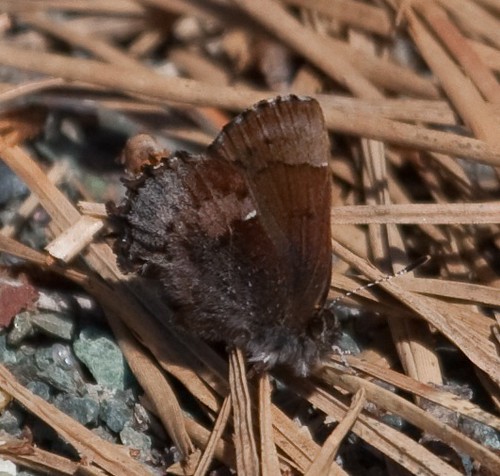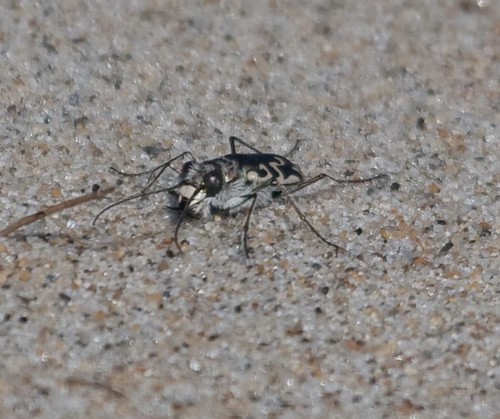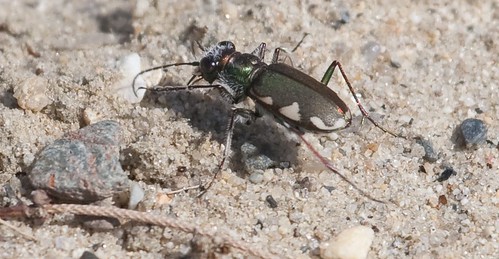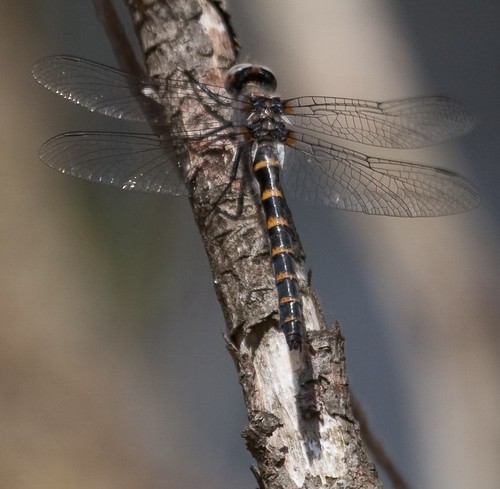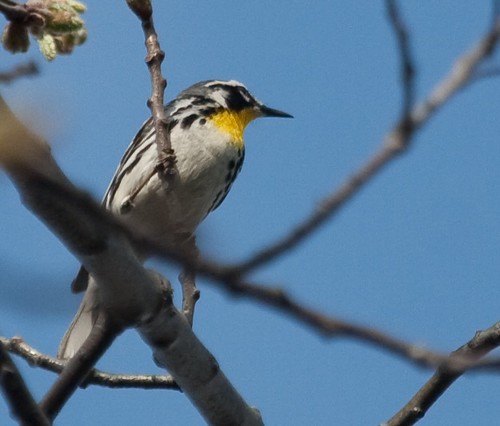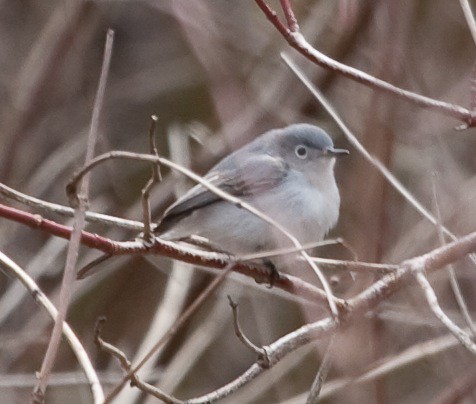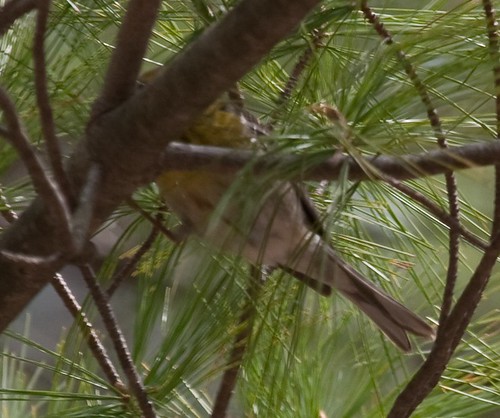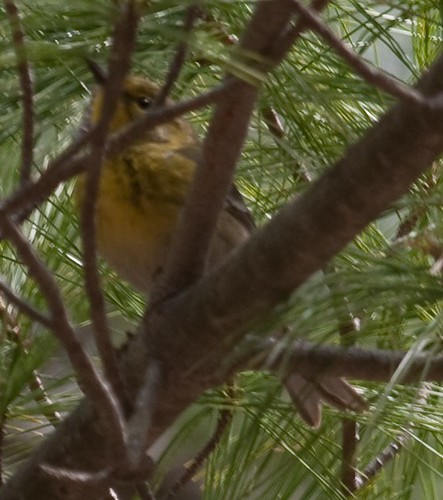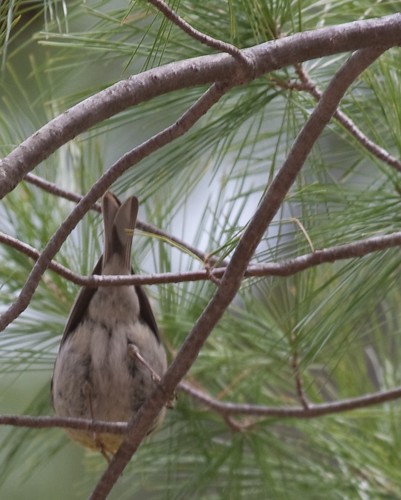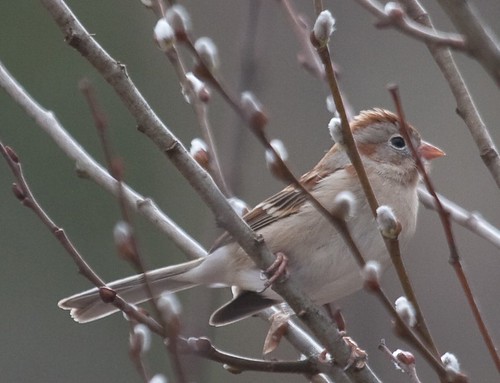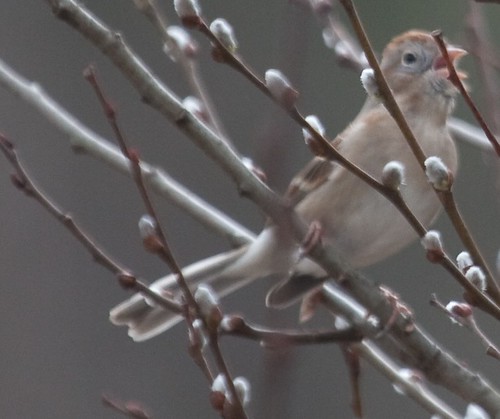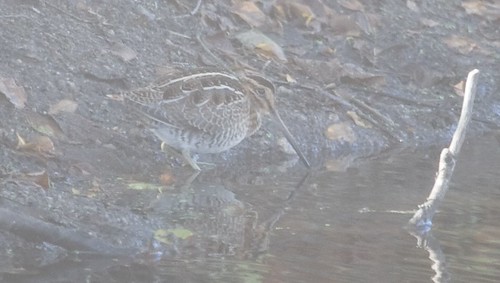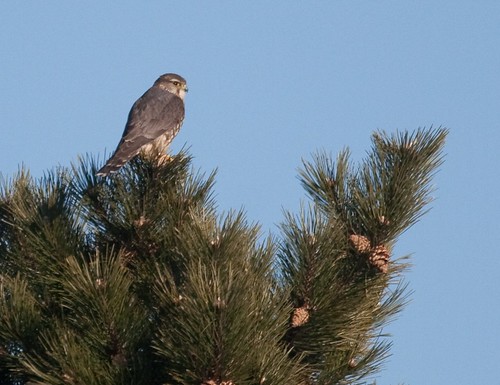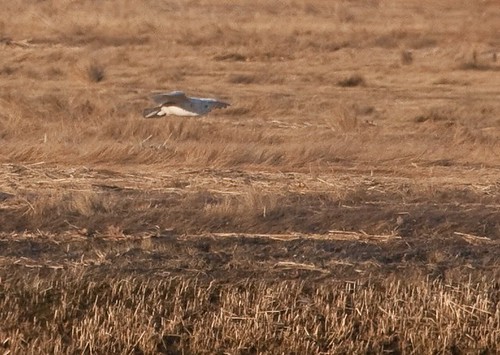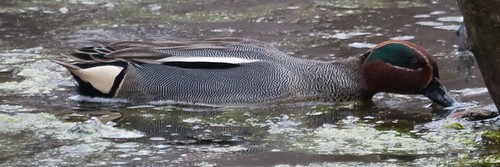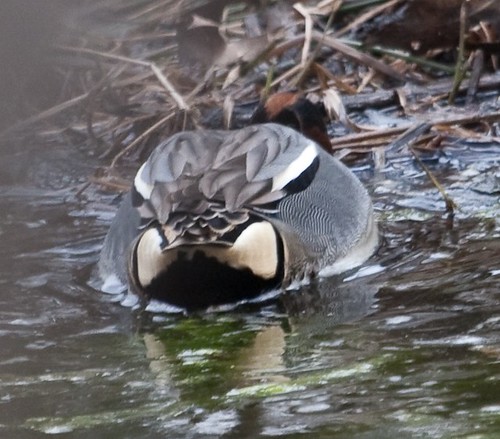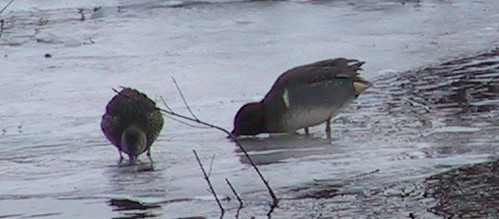One more from the weekend, a Brown Thrasher at Oxbow NWR:
April Weekend
Almost May
A few highlights from today (wish I had equipment to record the Rusty Blackbird chorus). Getting closer and closer to May and the migrants are trickling in.
First Gnatcatcher of the year.
And a Pine Warbler that almost cooperated:
He did come down towards the bottom of the tree but didn’t quite stay steady.
Still working on getting the places stuff going again.
Field Sparrow
A nice first of year Field Sparrow was singing in Dunstable on Saturday. It was a little hidden among the branches and it was a bit windy to keep him held steady, but I like the results.
Still working on some drafts for the next few in the 100 Places series, hopefully will put at least one up this week.
Snipe
Short-ear Help
Quick link: the Mass Audubon BBA Blog has a request for birders visiting Salisbury to help gather further evidence on the Short-ears we saw over the weekend. I’ve been playing with Google Earth trying to find the tree. No luck yet, but the closest ones appear to be .7 miles away from the parking lot.
Red-tail
Spring Weekend Highlights
Quite the weekend.
On Saturday, I joined the BBC trip, which wandered all over Essex county. Ross’s Geese were tempting, so it didn’t take too much prodding for me to join.
After meeting up with the group, we headed right over to the geese, which were along Rt. 133 in Ipswich. They had been discovered last weekend by Rick Heil (and then more were found in western Mass and then in Haverhill as well during the week) and ended up being almost too easy. We parked on the side of the road, walked up to the fence, and had the flock in the scopes. They were a little further than I would have liked, but were still quite easy to see. The stubby bills were quite visible. Since my previous experience with Ross’s Goose were a few heads that would pop up in the flock of Snows at Bosque del Apache, this was a good chance to study them. They were a bit far for good photos, but I did snap a few that were acceptable (and if you go through Massbird archives others have posted plenty of good ones).
After leaving the geese, we immediately returned as 3 Snow Geese were flying in. Unfortunately, they didn’t land so we got going again. After checking a vacant screech-owl hole and an almost birdless pond, we went to Stackhouse Rd. in Rowley and the Nelson Island section of Parker River NWR. I had never been here before (and didn’t even know it existed), but apparently it leads out through the marsh and ends up somewhere opposite the warden’s. Since the tide was heading out, we were able to walk out to the end. On the way out we found a nice Northern Shrike. It was fairly quiet otherwise, but a large owl pellet was interesting.
Once we made it back to the cars, we continued on to Red Gate Rd. As we pulled over, 2 meadowlarks landed in the field and a big flock of pipits flew over. The pipits disappeared but we all got good looks at the meadowlarks.
After a quick Dunkin’ Donuts stop, we continued on to Scotland Rd. There were a ton of Killdeer in the field and I picked up a very distant bluebird (so distant i don’t think anyone else actually got a look at it). We then moved on to the Cherry Hill and Artichoke Reservoirs. They were mostly frozen, but a few Common Mergansers and Ring-necks were around, along with a bunch of vultures.
We then went to the sandwich shop at the Rt. 1 rotary to pick up lunch (excellent eggplant subs) and then went to the Cashman park boat ramp for lunch. There was a loon in close and some goldeneye and scaup in the distance but no eagles. Once we finished eating, we headed to Plum Island.
Our first stop was at the Salt Pannes where we had lots of pintail and black ducks. I started squinting through the heat shimmer at a white blob way out when Christopher called over the radio with a flock of geese that were quite likely the Blue Geese that had been hanging around. They circled and landed, giving good flight views. We raced back to the previous parking lot and were able to get views from up on the boardwalk, but they were also in the shimmer and not very good.
We continued on down the island, stopping at an overflowing Bill Forward Pool and then at the Pines Trail where I stared at another white lump in the distance. Again, it was impossible to make out detail through the shimmer although I think I did see this one move. We then reached Sandy Point, which was fairly crowded. Walking out to the end, we couldn’t find the year’s first Piping Plover but did find a lot of Long-tailed Ducks, a few scoters, and several Brant.
From here, we headed to Salisbury. We walked through the pines, which had a few chickadees and doves and not much else. I was already back in the car when Mark noticed a bunch of photographers all pointed at something in the campground. We started over (stopping for a moment as a Peregrine buzzed by) and found them looking at a Merlin in the top of a pine.
We moved on to the boat ramp to look for owls and were beyond successful. I’ll just quote Laura’s post on the subject as it covers everything:
Upon our arrival at the boat launch (about 5:15pm) I immediately started to scan the marshland to the north and caught a glimpse of a SEOW flying low over the phragmites and close to the woodland edge. The bird disappeared and I searched with my scope, eventually re-locating it perched atop a pine tree. I got Mark, Janet, the Forbes, and the Rolnick’s on the bird and then we began our long wait, hoping it would fly. We kept watch for more than an hour and could not get over the fact that it did not move from its location. We could see it move its head from side-to-side and caught glimpses of its dark eye patch and buffy color, especially on the back of the head and nape.
At one point, we saw another good-sized bird fly right over the SEOW yet the SEOW continued to sit atop the pine tree not moving from its location. The other bird, a SEOW, quickly hovered over the SEOW’s perch, landed on a bough right next to it, and then sat close to it for about 10 seconds. Then, the other SEOW started to make a move, gently jumped closer, and then hovered very close over the SEOW. There was a bit of activity and then the other SEOW got on the back of the SEOW and it raised its rear and fanned its tail feathers so that I could see the barring and buffy color of the tail feathers. Then, it looked like the other SEOW gave the SEOW a cloacal kiss – we could not believe our eyes!
Quickly after the cloacal kiss the other SEOW went back to its bough and sat for about 20 seconds and then it flew off to the west over the marshland. We thought maybe it was going to hunt and bring its mate something to eat – but it did not. The other SEOW kept on flying and eventually went into the woodlands never to be seen by us for the rest of our time there. Meanwhile, the SEOW continued sitting on its perch. After another half hour of watching and hoping it would fly – I gave a quick scan to the west, Janet gave a quick scan to the east, and Jason blinked. Within a blink of an eye – and just like that – the SEOW left its pine tree perch and simply disappeared from our sight. It was never to be seen by us for the rest of our time there. We searched until about 7pm. What we did see was amazing though and yes Spring IS in the air!!!
While all of this SEOW activity was happening, we had stunning looks at a very active Snowy Owl over the marshland to the east. It had a blaze-orange dot on the back of its head.
Quite the experience. The Short-ear was way too distant, but I did get a couple shots of the Snowy as it passed by.
It was almost dark by the time the owl vanished, so that ended the trip.
I woke up Sunday to cloudy skies. I had planned to run around a bit looking for siskins, but decided instead to go find Fox Sparrows at Dunback. That proved to be a good decision (and the one to not bother with the camera was a bad one). As I arrived, I could see Marj, Renee, and Alan walking down the trail. I caught up with them about halfway to the intersection. Not too much further, the chickadees were going crazy. Marj very casually said “boy that’s a dark looking owl.” There was a very nice Great Horned sitting only a couple trees into the woods.
After getting good looks at the owl, we continued towards Bacon St. Along the way, we thought we heard a Purple Finch, so we wandered towards the driveway at the end. I found a Fox Sparrow and then we found 2 male Purple Finches. Working back up Bacon St, we kept finding Fox Sparrows. Everyone was calling them out and at one point we had six in one view (and probably over 10 total). There wasn’t much further down, so we returned to the intersection and worked towards the birches.
As we started, Alan and I heard and got brief looks at what appeared to be a Pine Siskin. It wasn’t overly birdy further down, but we had another Fox Sparrow and two flickers. Heading the other way, we had a couple Siskin flyovers. The small pines had a couple of small pellets but we couldn’t find the Saw-whet that they presumably came from.
In the tall pines, we refound the Great Horned in a different tree (expected as the crows had gone crazy while we were on Bacon St) and then found a whole bunch of siskins towards the top of the hill. Several were carrying bits of plant matter, which is a confirmation for the BBA (except Marj and Renee had found them elsewhere in this block already). We eventually got tired of looking straight up and headed back to the cars.
I decided to run over to the Paine Estate to try to confirm siskin in my block, where I haven’t had any luck even seeing them since December. I took an extended walk all around the edge of the estate. Partway around, two Red-tails flew over squawking and acting like a couple. And sure enough, after walking all around, I found a pair or two of siskins right at the abandoned parking lot that I pass by on my usual lunchtime loop. I wasn’t able to find them with any material, but I’ve got a place to look now and it won’t be long.
After stopping at home for lunch, my parents joined me for a trip to look for the Eurasian Green-winged Teal that has been hanging around (acting like a pair with a female Mallard(?!)) in Cold Spring Park in Newton. After arriving, we found the water pretty quickly and the teal was right there. It swam back and forth and gave good views and allowed for fairly good pictures.
Note the long, horizontal white stripe, the bolder lines on the face, the more heavily marked sides, and the slightly different shape to the creamy patch at the rear. That would be easier to see if I had a decent picture of the typical American one, but here’s a mediocre shot that does show some of the differences:
After walking around a bit, we started out and the teal flew overhead and landed at the other small pond. A bunch of birders were showing up as we left, all very happy with the views.
So a state bird, a bunch of year birds, and a life subspecies that’s likely to be promoted quite soon. I don’t think there’s anything to complain about.
BPW Swallow
Links etc
A few interesting links from the last few days while I think about getting the 100 places series going again:
Mass BBA Blog is being updated again
New Moth Project: North American Moths Backyard Inventory, complete with carnival (not that I’ll have found something worth writing about in time for the first one or two)
Fascinating thread on TEXBIRDS about storing data (what do you do with your actual notes/drawings and nonbird records that can’t go up on ebird?)
